This tactical theory will analyse tactics used in the attacking phase by teams playing in a 4-3-3.
The tactical analysis will focus on both the individual techniques and movements used by players in Europe's top teams as well as how these forwards interact with their teammates.
Current Premier League leaders Liverpool’s front three will be analysed, along with examples of how they create goalscoring opportunities.
The movements of Celtic’s front three in the attacking phase and how Hansi Flick’s Barcelona wingers bring their full-backs into play will also be analysed.
Based on the analysis, coaches will be provided with practice exercises that focus on both individual technique and combination play.
Celtic’s Front Three
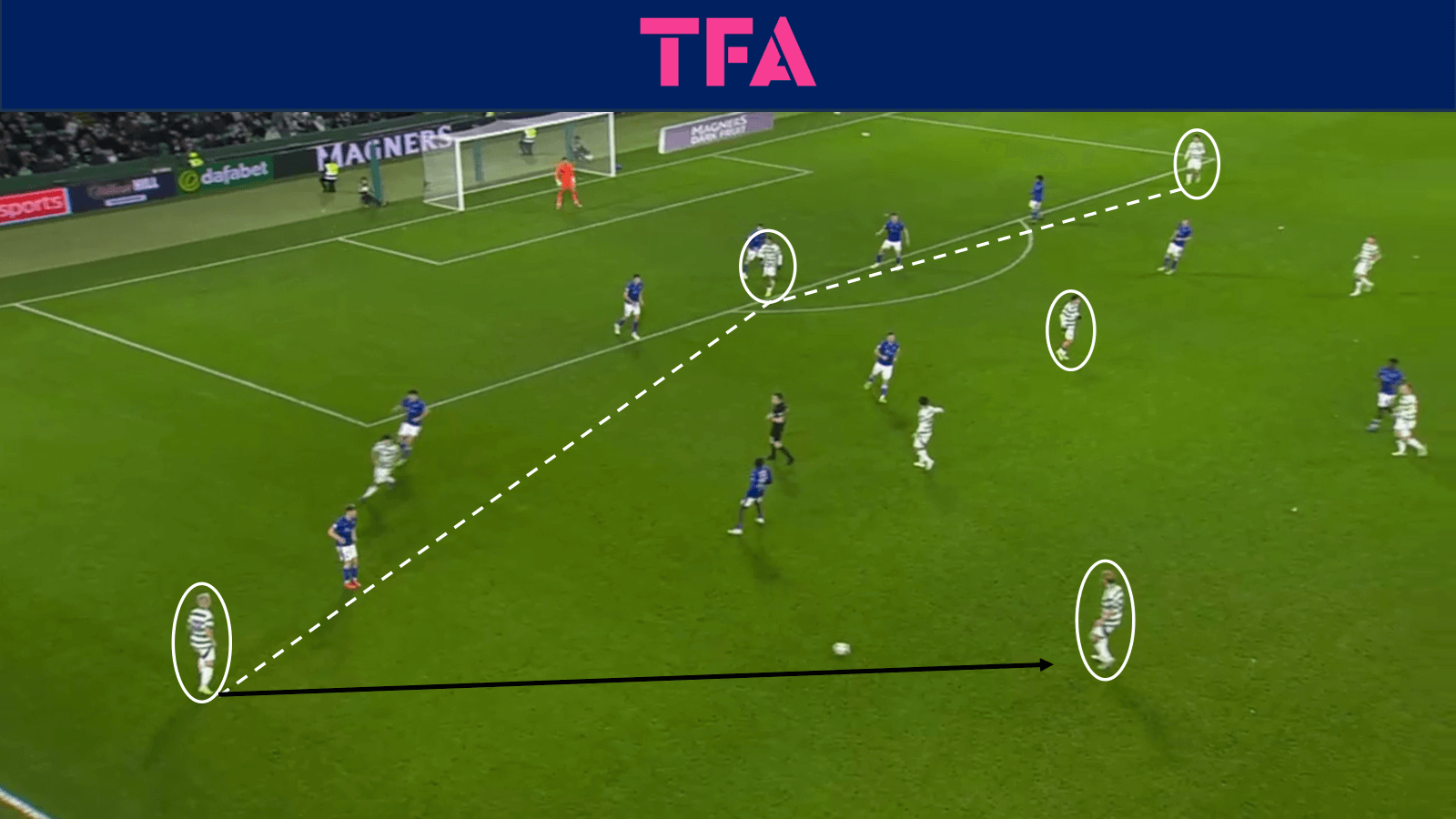
This play, from Celtic’s recent victory over St Johnstone, shows the effectiveness of wingers cutting inside to receive the ball.
This move begins with the ball at the feet of Celtic’s left-winger (and eventual goalscorer), Daizen Maeda, in the wide area.
Maeda has just passed the ball inside to his centre-back, Liam Scales, who then picked out his central midfielder, Paulo Bernardo (circled).
The opposition's backline is being pinned back by Celtic's right-winger and striker, preventing them from stepping up to squeeze the space Bernardo occupies.
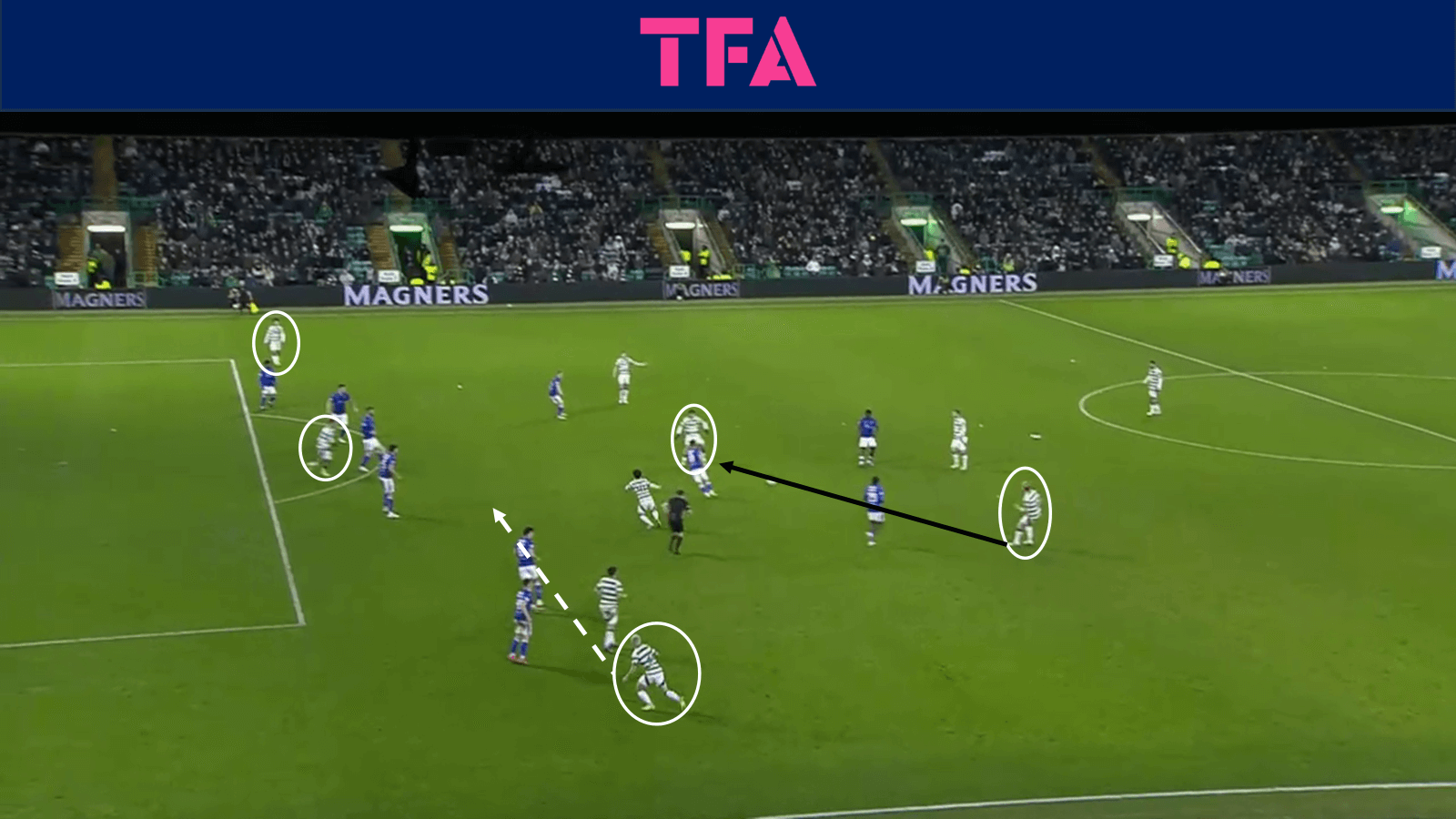
As the ball travels to Bernardo, and as soon as Maeda recognises that the midfielder will be able to receive it, his first touch taking him forward, the winger begins his run inside the pitch.
The Japanese international runs across the opposition's backline to keep himself onside before, and just as the ball is played by his midfielder, he cuts into the box.
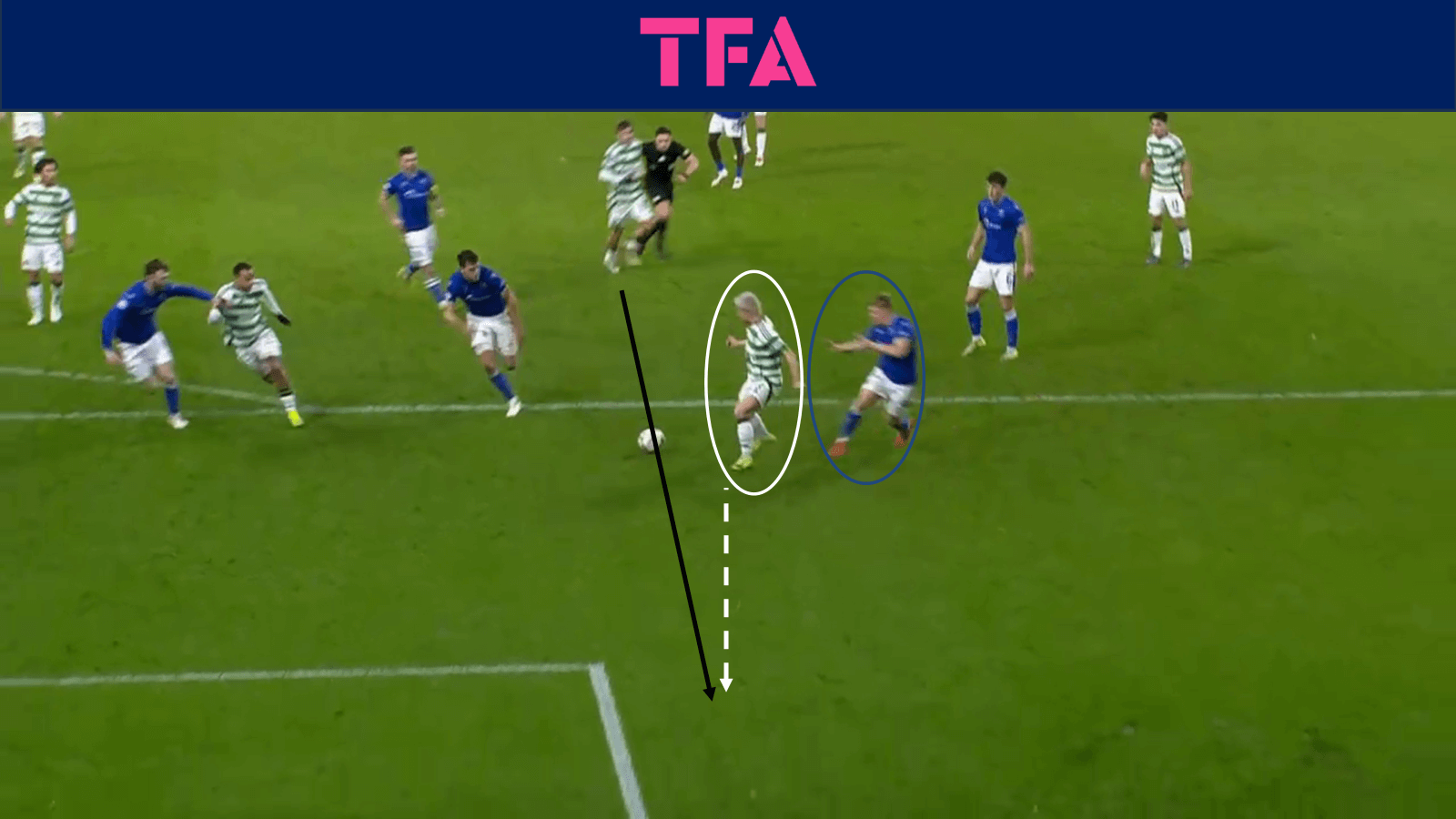
Maeda’s darting run inside the opposition's low wing-back allows him to be on the ball side of the defender.
This primarily helps him protect the ball, but his side-on body shape also allows the ball to roll across him.
By allowing the ball to roll across him, Maeda can shoot with his first touch.
The first touch shot is both unpredictable in its timing and, with his body orientation, difficult for the goalkeeper to anticipate where it will go.
Liverpool's Wingers
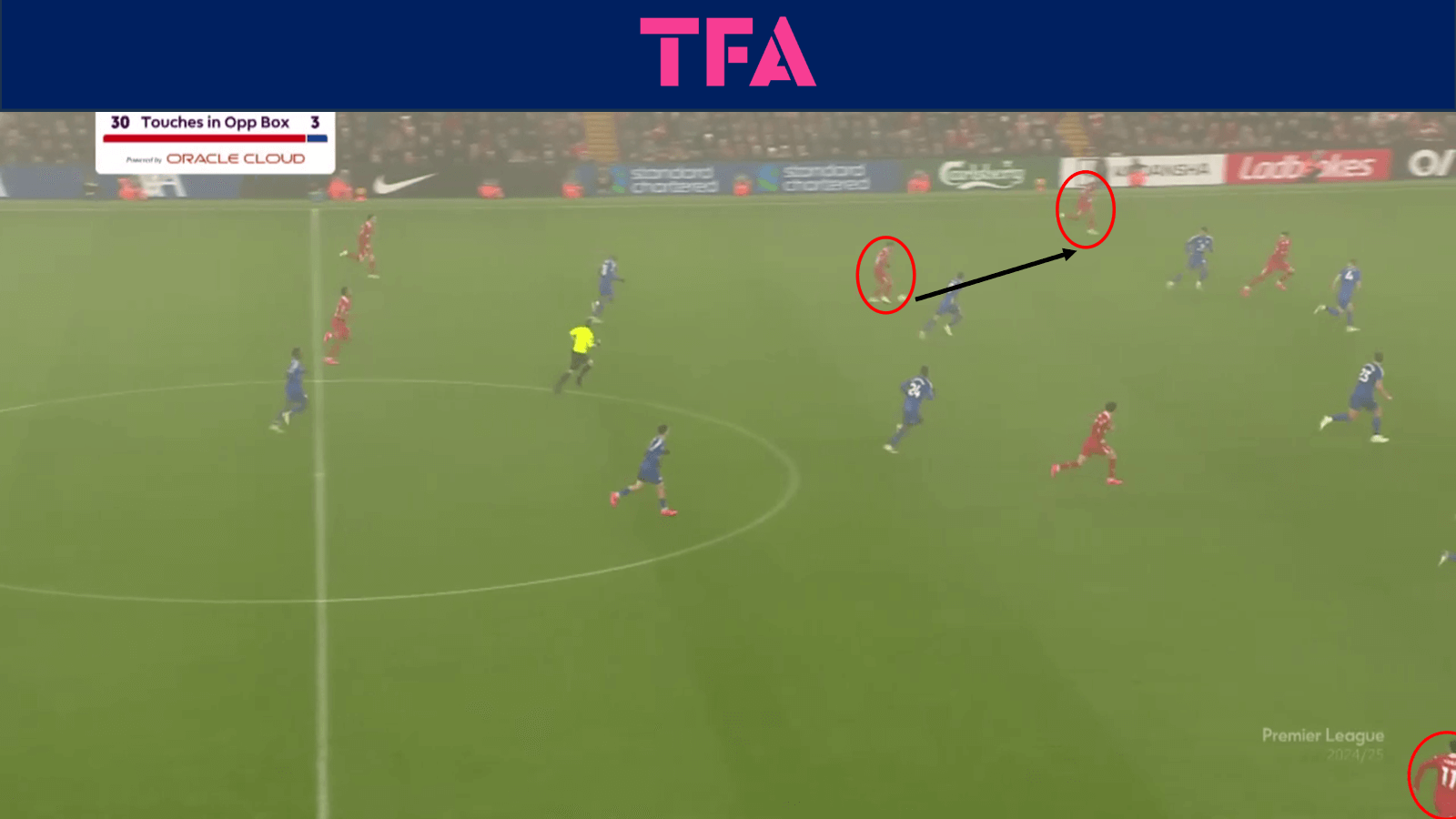
Almost a trademark of Liverpool's wingers over the years, under both Arne Slot and Jürgen Klopp, is their ability to cut inside with the ball to devastating effect.
The above image shows the build-up to Liverpool's equalizer against Leicester City in the side’s recent Premier League encounter.
Here, Liverpool's wingers are playing high and wide, Cody Gakpo on the left and Mohamed Salah (just visible in the bottom right corner of the image) on the right.
Gakpo is about to receive a pass played ahead of him by his midfielder, Alexis Mac Allister.
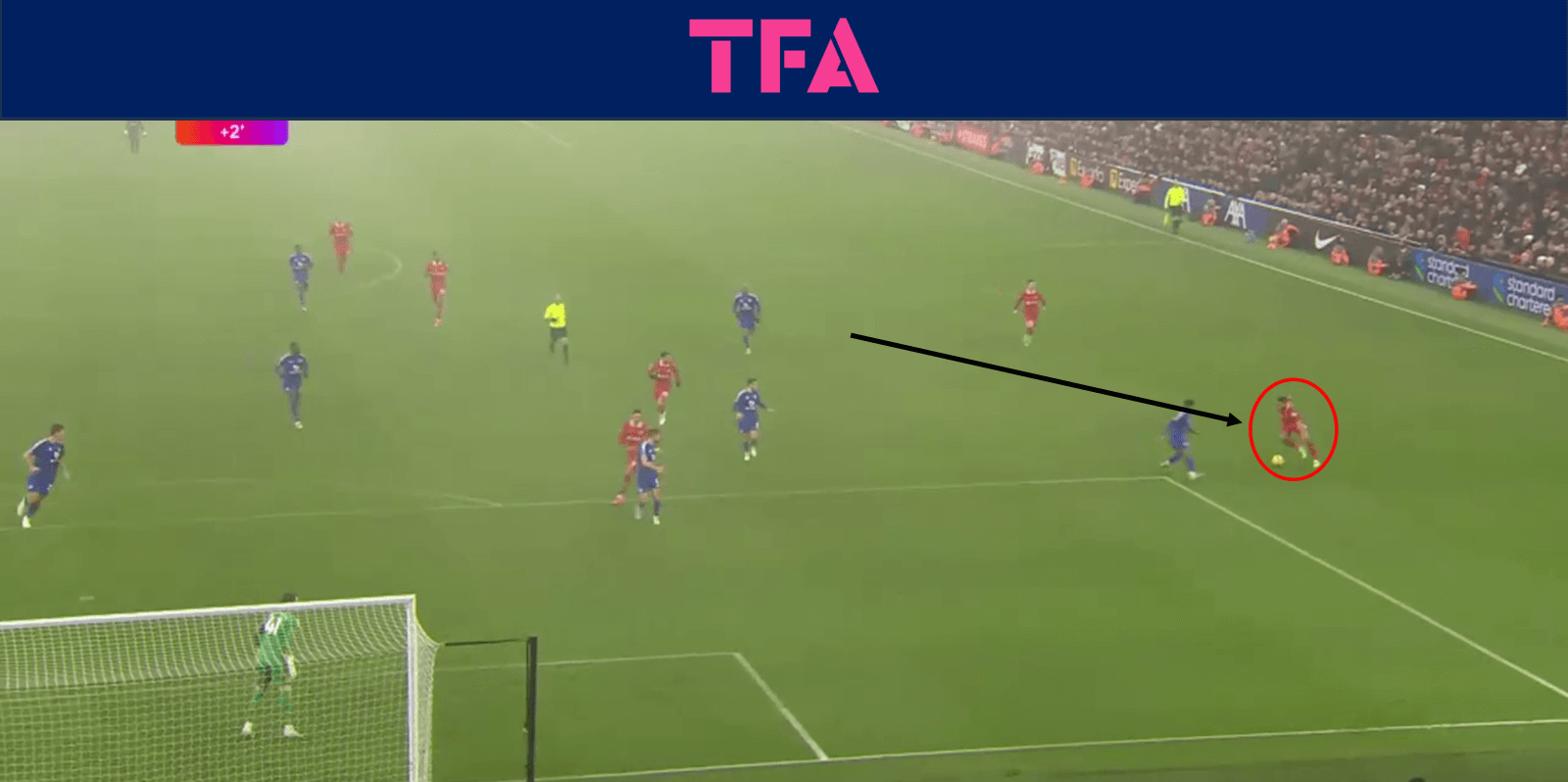
Gakpo receives the ball and, with a drop of his shoulder, makes the full-back think he is going down the line before cutting in with the outside of his opposite foot.
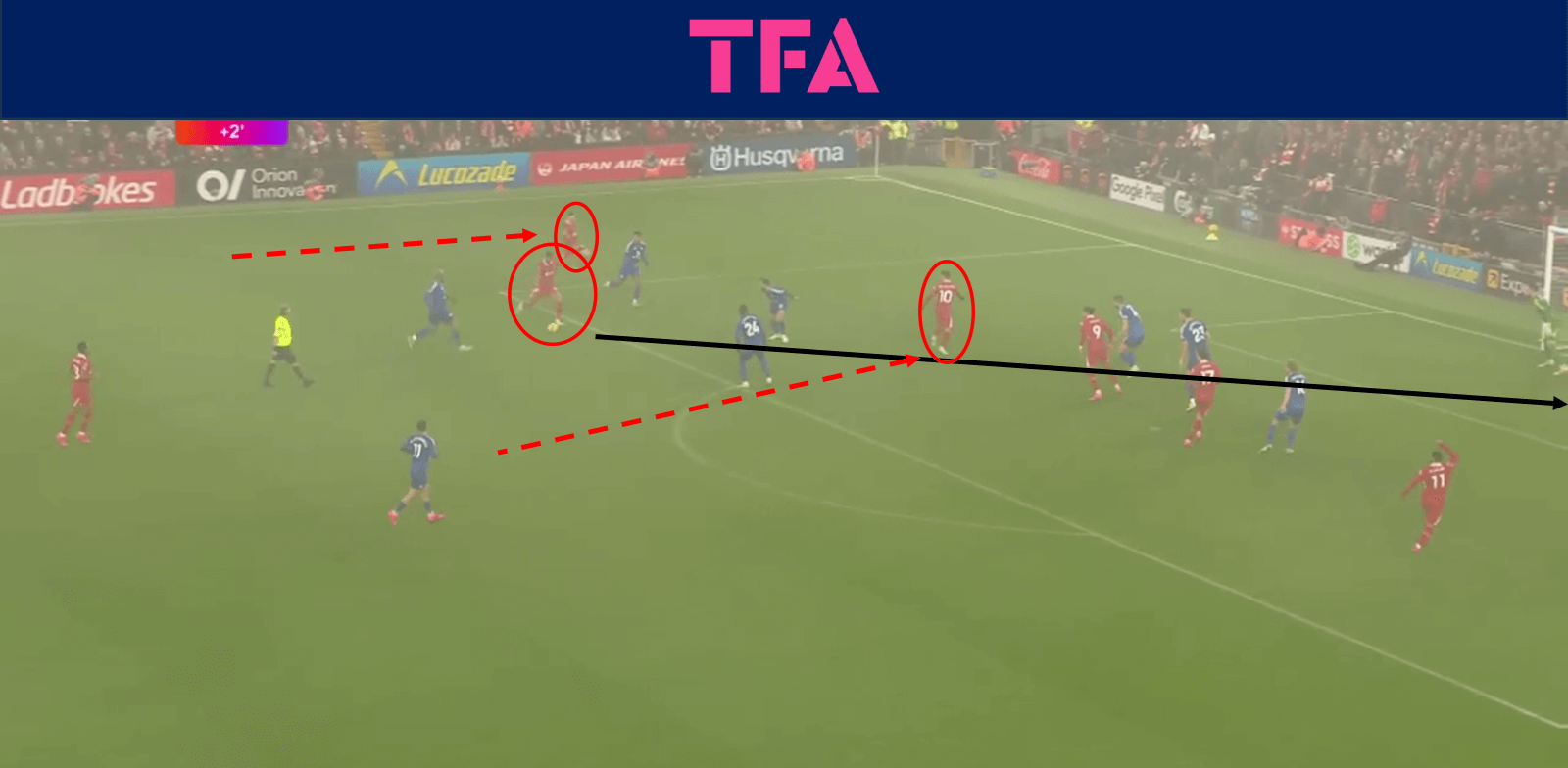
This cutting action was the trigger for his left-back to overlap, preventing the opposition full-back tracking him inside.
It was also the trigger for MacAllister, who originally played the ball out wide, to run into the box, dragging the nearest covering midfielder with him.
These two players’ movements, coupled with Salah and Striker Darwin Nunez occupying defenders in the box, allowed Gakpo to shoot from the edge of the box with a clear sight of goal.
Flick's Full-Backs
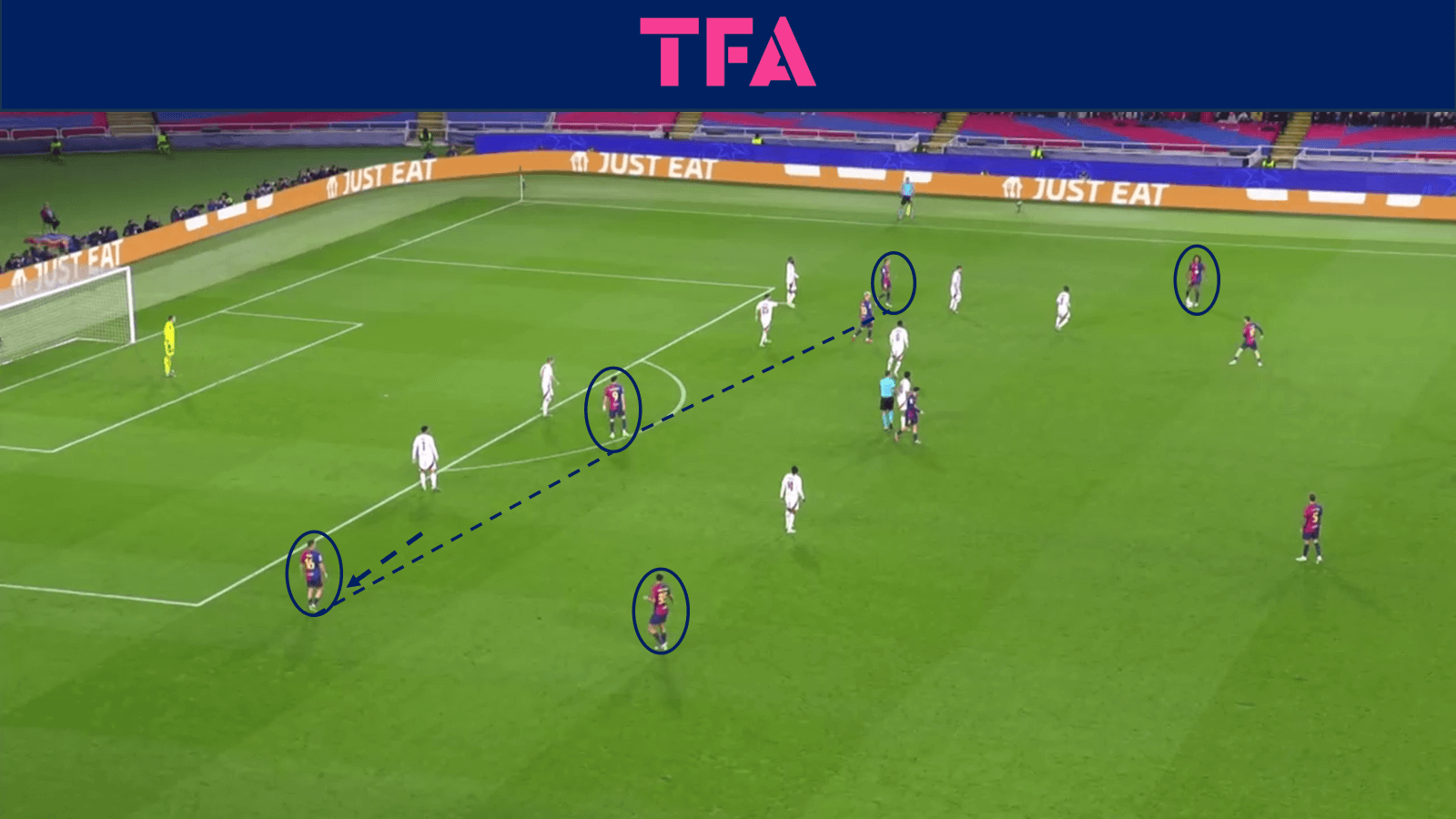
This goal, scored by Barcelona in their Champions League match against Ligue 1 Brest, provides an example of how the relationship between full-back and winger can be used to create goalscoring opportunities.
Barcelona, attempting to break down Brest's low block, have both their full-backs high and their wingers spread across the width of the 18-yard box.
With the ball about to be switched, left winger #16 Fermín López has backtracked from a more central position to open up by the width of the box.
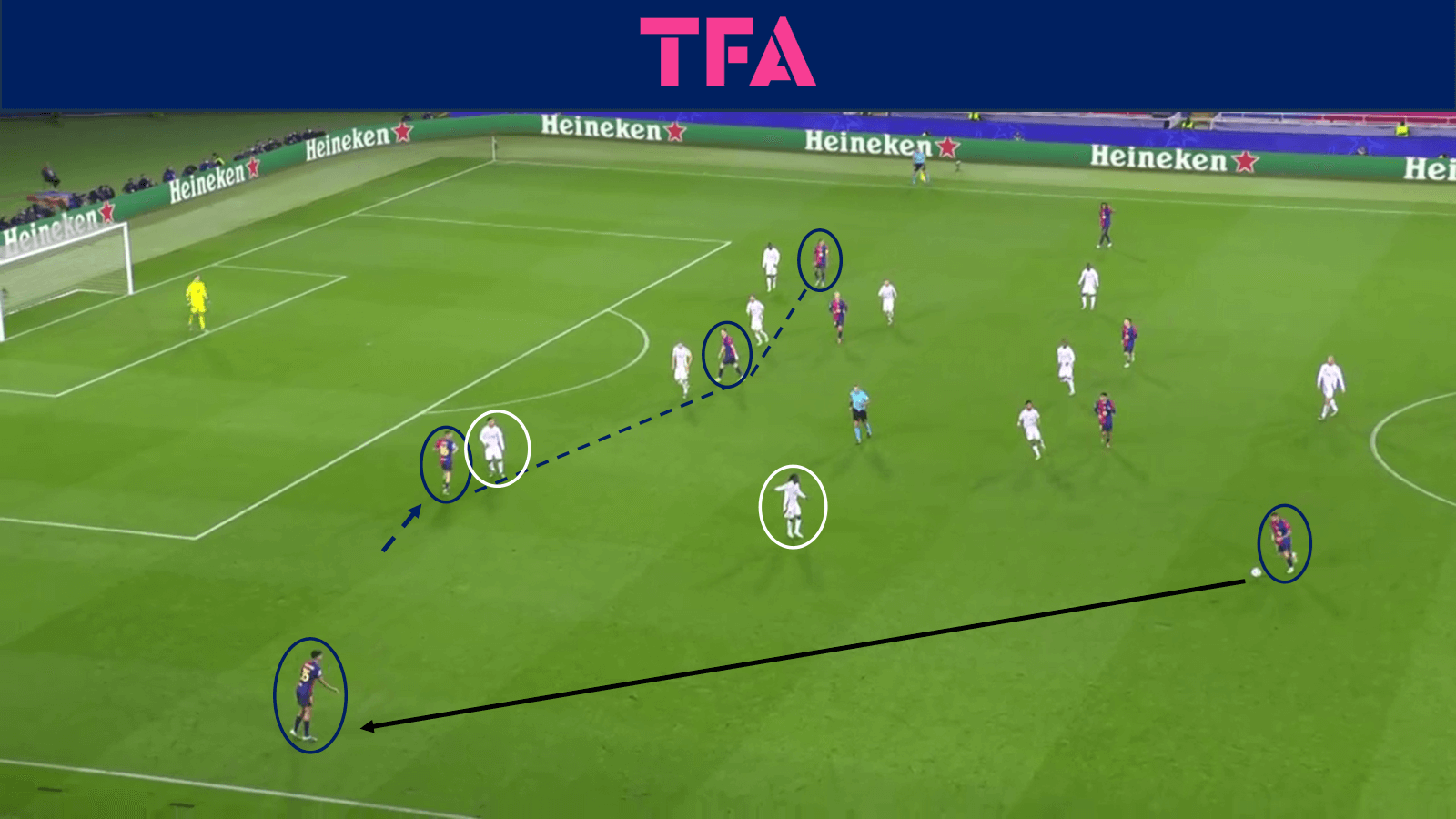
The movement inside the pitch, towards Brest’s right-back, pins the opposition full-back, preventing him from shifting to a wider position.
This creates space for the Barcelona left-back, #35 Gerard Martin.
As can be seen by his arm signal, Brest’s widest midfielder recognizes that the distance between himself and Martin is too far.
If the left-back receives the ball, he will be unable to apply appropriate pressure and prevent the Spaniard from attacking the box.
The wide midfielder cannot jump early to the full-back as he needs to protect the central area.
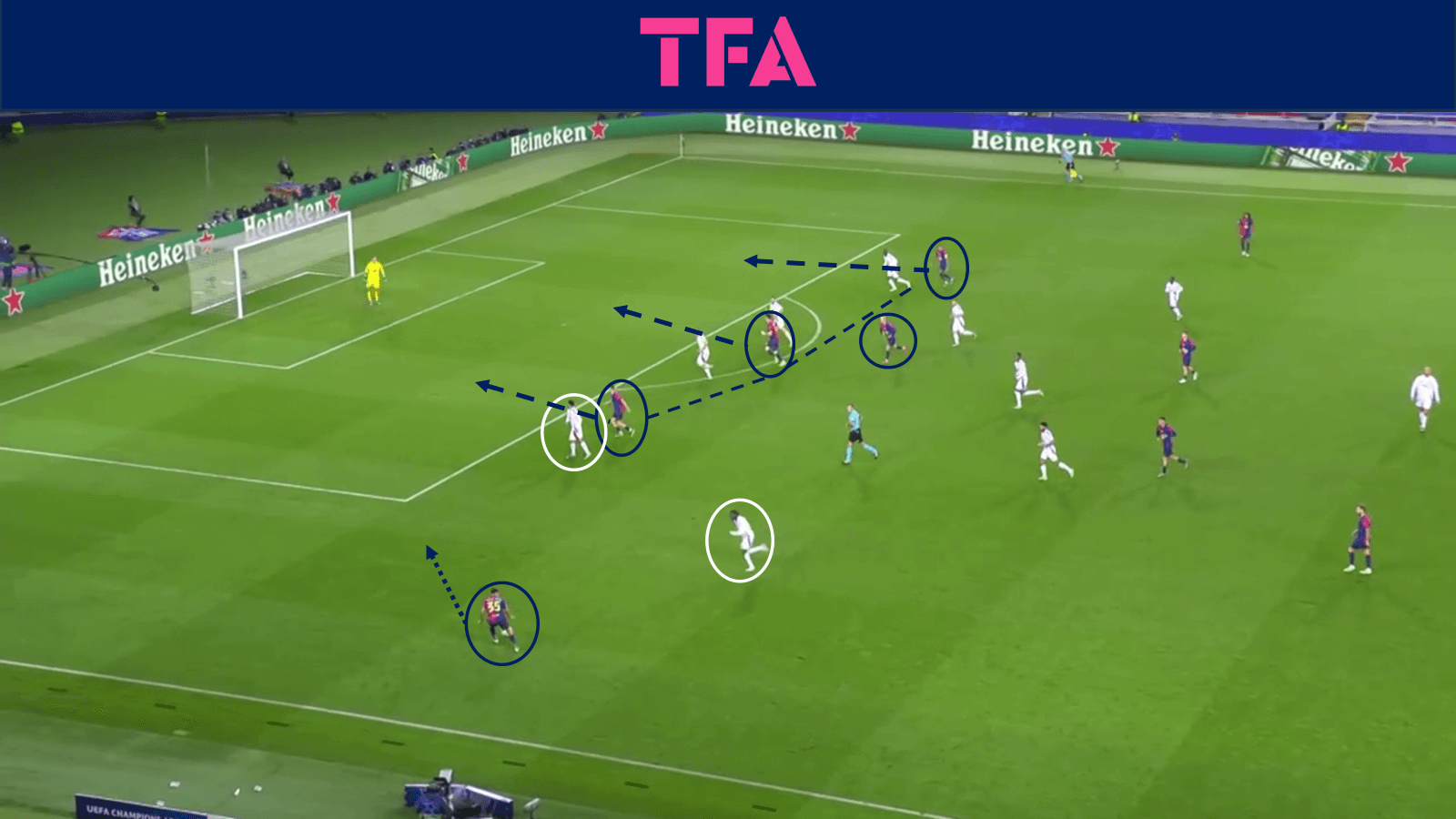
Martin takes his first touch forward beyond the pressing wide midfielder, with all three of his forwards well within the width of the box.
The forwards are supported by their attacking midfielder, Dani Olmo (circled).
As soon as Martin took his first touch, the three forwards all made runs in behind.
This made them an option to receive an early cross, as well as creating space for Olmo by pushing the defenders back towards their own goal.
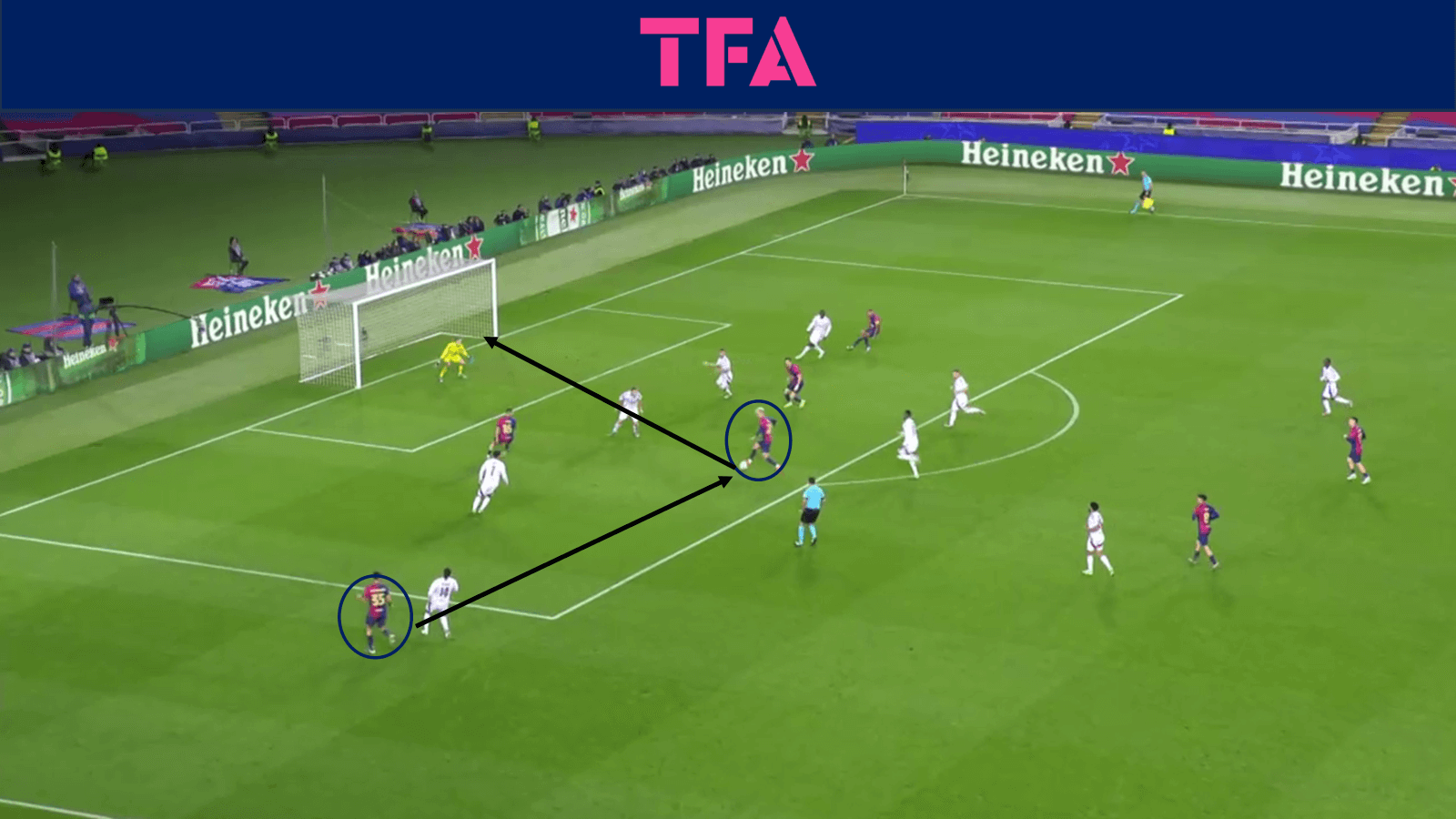
As can be seen in this image, the defenders all dropped off to defend the space behind them.
This left room for Olmo to receive alone and score Barcelona’s second goal of the match.
Without any of the front three actually touching the ball, they were pivotal in creating this goal.
In the first instance, this is to allow their full-back to receive in space, and in the second instance, it is to create room for Olmo to attack the box.
Individual Practice
The following practice exercises are designed to work specifically with players playing in a front three.
The exercises focus on both on the individual technique required as well as the movements and combinations that allow players to optimize their goalscoring opportunities.
This first exercise is an individual finishing practice that mimics the movements and techniques shown by Celtic’s Maeda, who cuts inside to receive the ball, and Gakpo, who cuts inside with the ball.
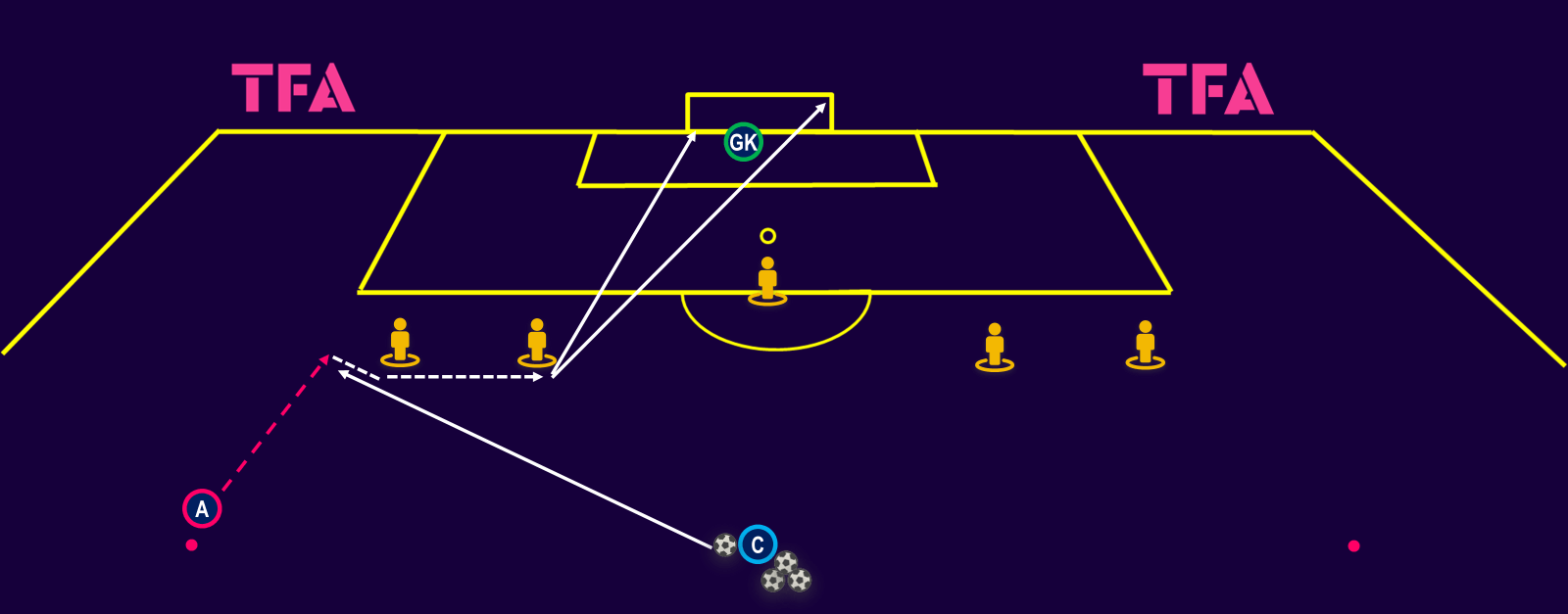
The first three shots in the sequence show the working player, ‘A,’ cutting inside with the ball to shoot at goal.
‘A’s run towards the outside mannequin, representing a full-back, initiates the coach, ‘C’, feeding a diagonal pass.
As the ball is about to reach the winger, just beyond the first mannequin, they should transfer their bodyweight to their outside leg before cutting in with the outside of their opposite foot.
The first touch should be big enough to take the ball beyond the first ‘defender’.
Once the player is beyond the second mannequin, they shoot.
The winger should be encouraged to either bend their shot in the far top corner or disguise their intentions with a low, firm shot inside the near post.
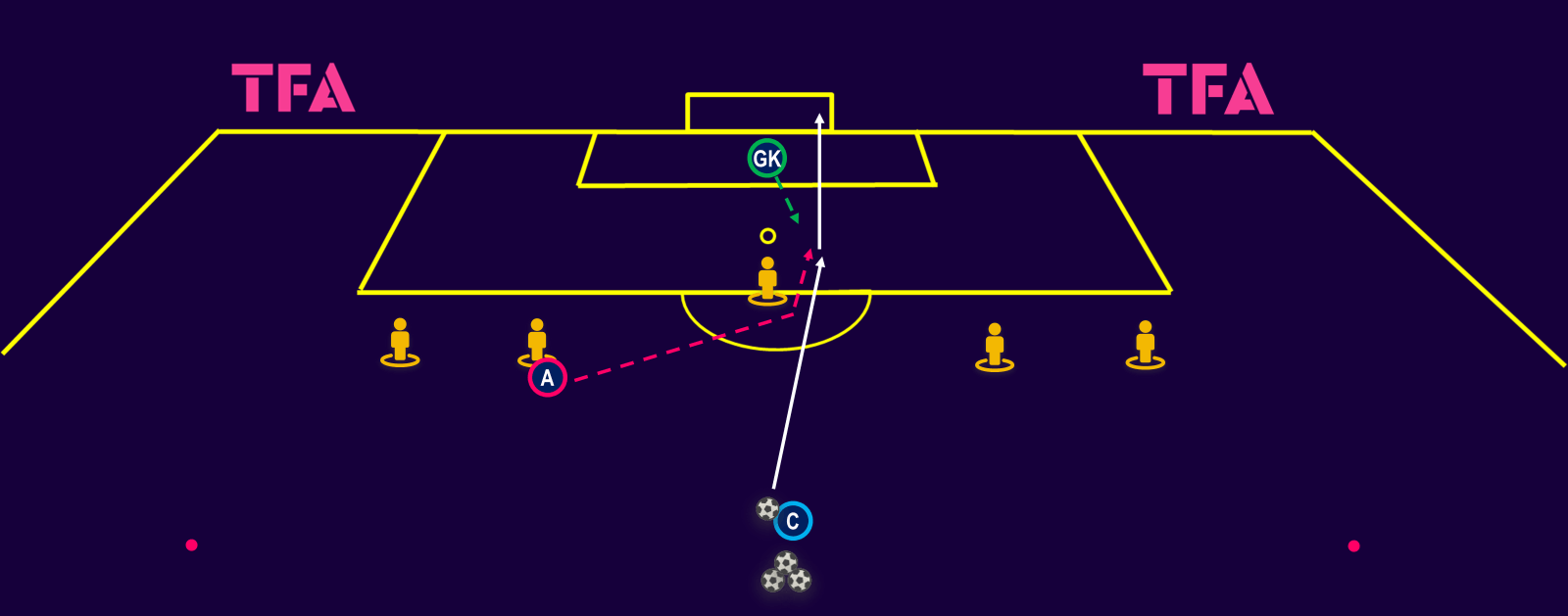
The winger continues their momentum towards the middle mannequin as soon as the first shot is taken.
The coach then slides a ball down the side of the central mannequin for the forward to run onto while protecting the ball from the central defender.
The goalkeeper is live in this play and provides additional decision making for the forward by being permitted to close them down.
The shooter must have an awareness of where the goalkeeper is and the wherewithal to choose the correct course of action - shoot early or take the ball past the goalkeeper.
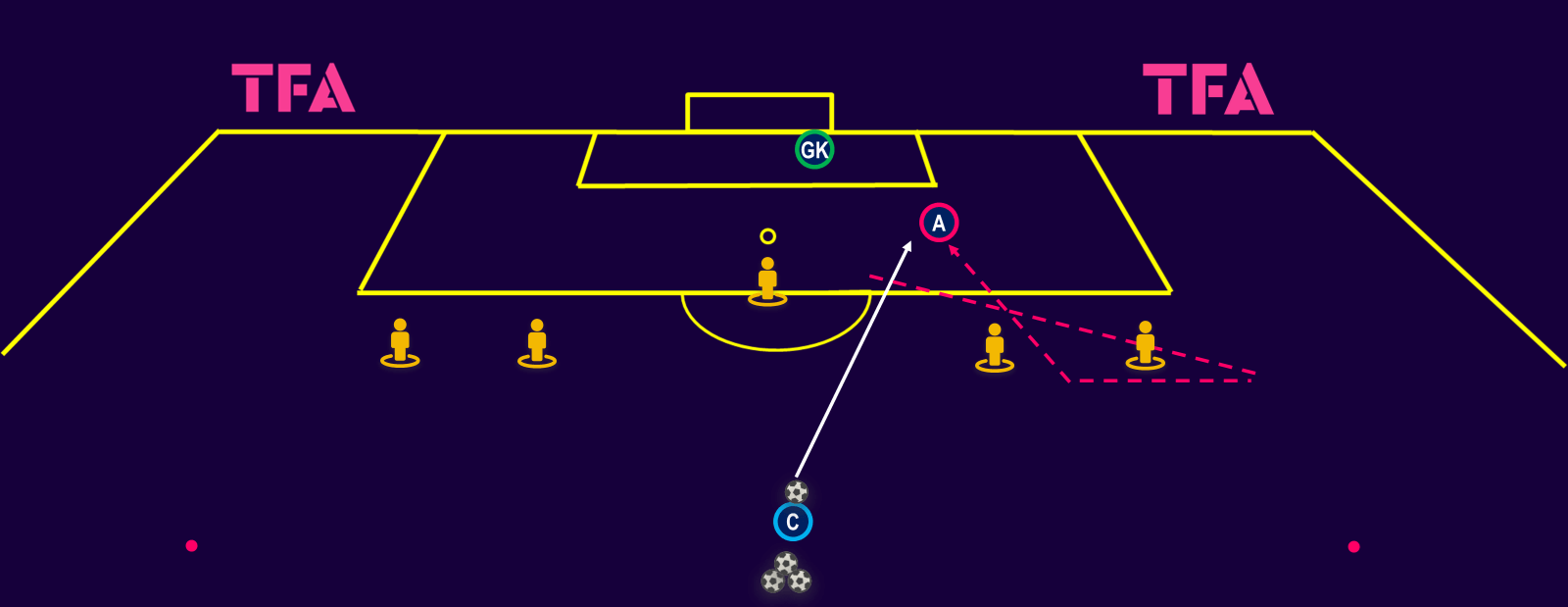
The third and final shot replicates Maeda's movements, cutting inside to receive the ball.
After the second shot, the attacker moves around the outside mannequin before running along the defensive line.
The trigger for the cutting motion is the coach's pass.
The working player should react to the punched through ball and dart onto it before the goalkeeper is able to reach it.
Ideally, the attacker should allow the ball to roll across their open body before finishing first time.
The three-shot sequence can then be repeated on the opposite side.
Attacking Patterns of Play
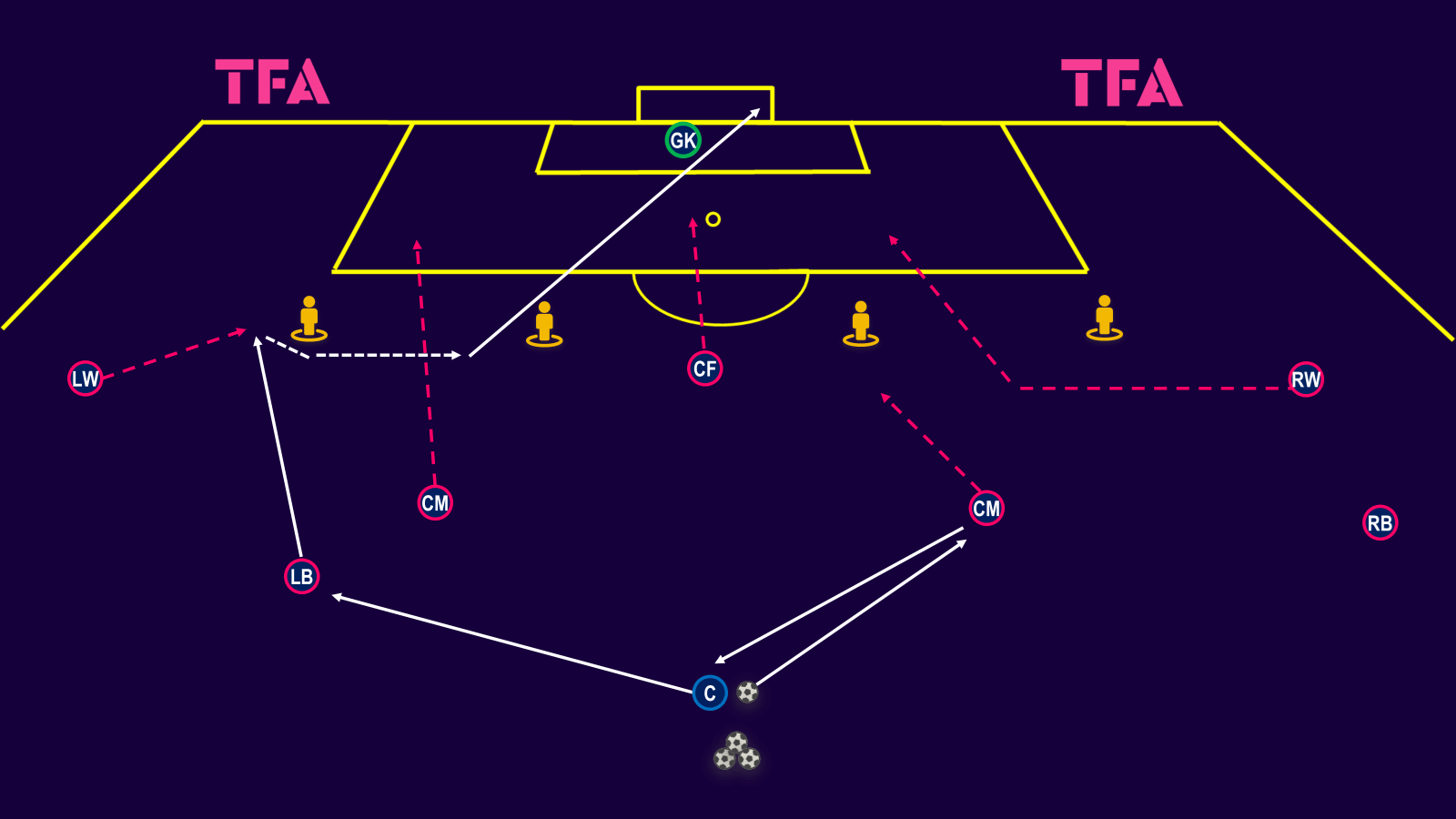
The individual actions in the first exercise can then be incorporated into a team exercise that focuses on attacking patterns of play.
This unopposed set-up has four mannequins representing an opposition back four defending near the edge of their own box.
The first pattern begins with a coach or player making the first pass from a defensive midfielder's position in a 4-3-3 formation.
The first pass is a bounce pass to one central midfielder before the ball is played to the opposite-side full-back.
The full-back then plays a ball down the side of the mannequins for their winger to run onto before cutting inside and shooting.
As shown on the tactical diagram, the central midfielder should make a run between the opposition full-back and centre-back to clear this area for their winger.
The other forwards and ball-far midfielders should also make the appropriate runs.
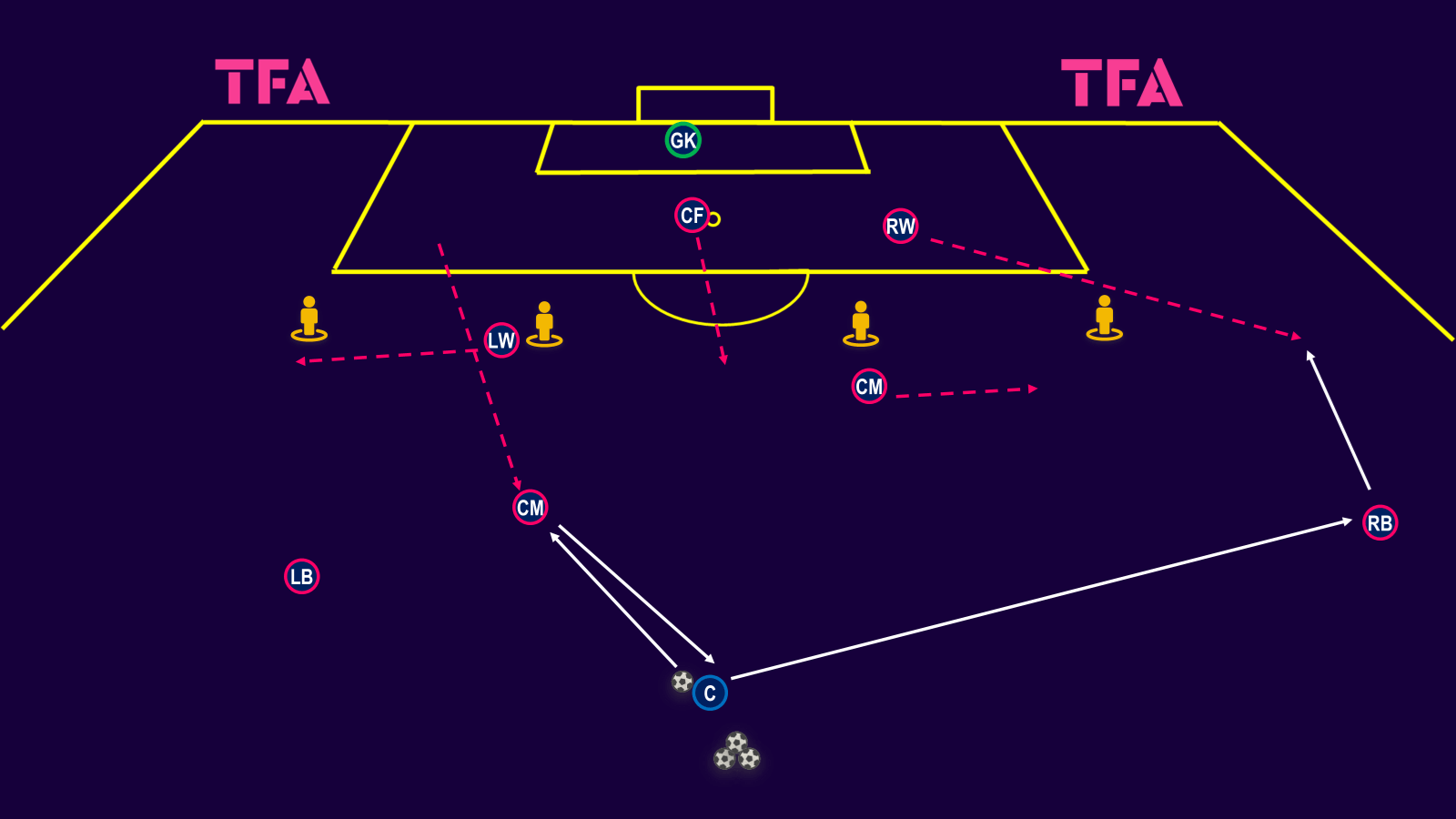
As the players are making their way back towards their starting positions, the coach will put a ball in play immediately after the first shot is taken.
This provides a sense of urgency and requires the players to re-position themselves in a ‘live’ scenario from positions akin to real game scenarios.
The next phase again begins with a bounce pass before being switched to the opposite full-back, then winger.
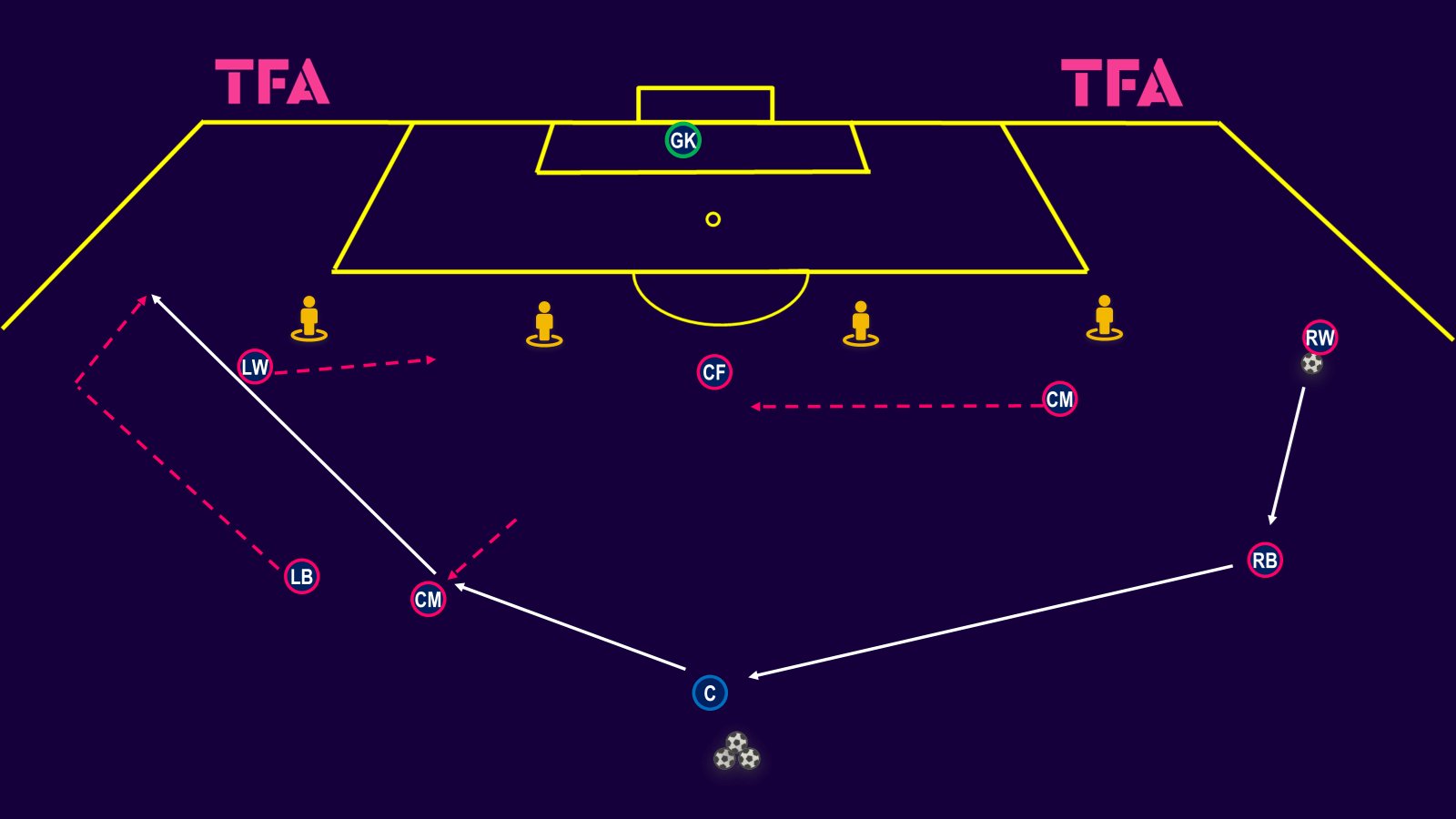
The ball is then switched again, with the ball-far central midfielder dropping at an angle to receive.
The winger narrows as the ball travels to the central midfielder, allowing the full-back to move wide and receive in the space.
The opposite central midfielder is now moving across the pitch to position themselves to make a supporting run into the box.
The ball far winger also begins to narrow as the ball reaches the full-back in the opposite wide area.
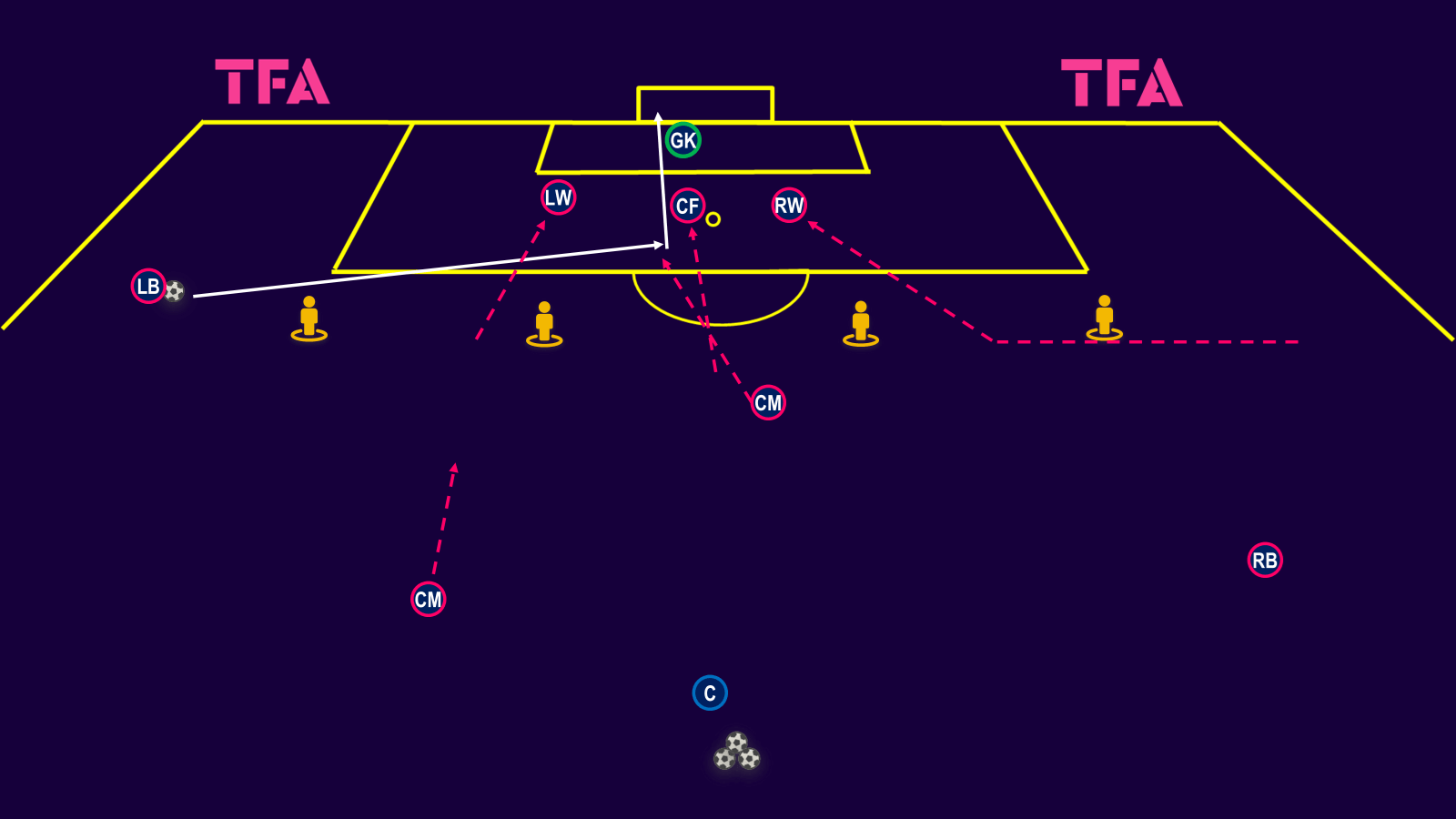
The full-backs diagonal first touch is the trigger for the front three to attack the box as shown.
The highest central midfielder then runs behind them to just inside the box.
The full-back should deliver the ball early, either picking out the central midfielder for whom the forwards have created the space or whipping the ball ahead of the forwards for them to attack.
Slipping the ball down the outside of the six-yard box for the ball-near winger to run onto is also an option.
Conclusion
The positioning and movement of the front three are pivotal in creating goal-scoring opportunities.
Even without touching the ball, their runs can disrupt defensive structures, creating space for teammates to have shots at goal.
Attacking players must be provided with the opportunity to work on their technique for individual actions.
Additionally, they should be coached on recognizing triggers and their teammates' movements to effectively manipulate space for themselves and their fellow attackers.

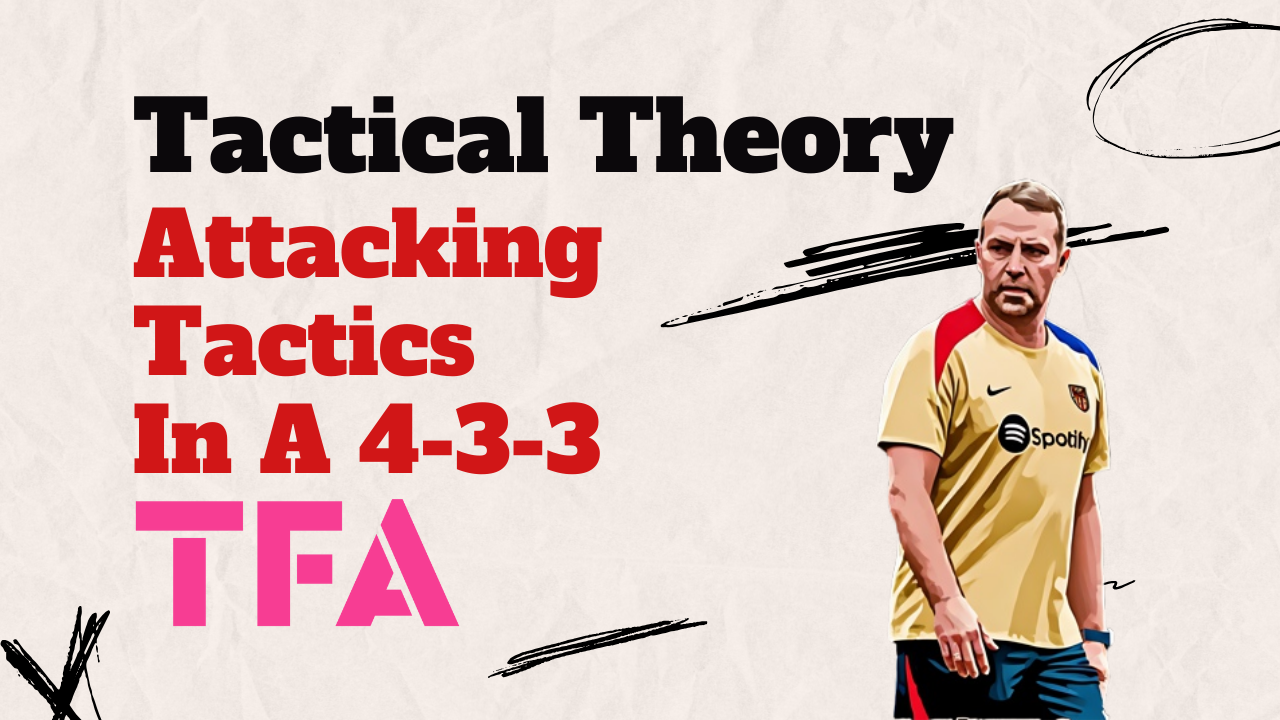




Comments